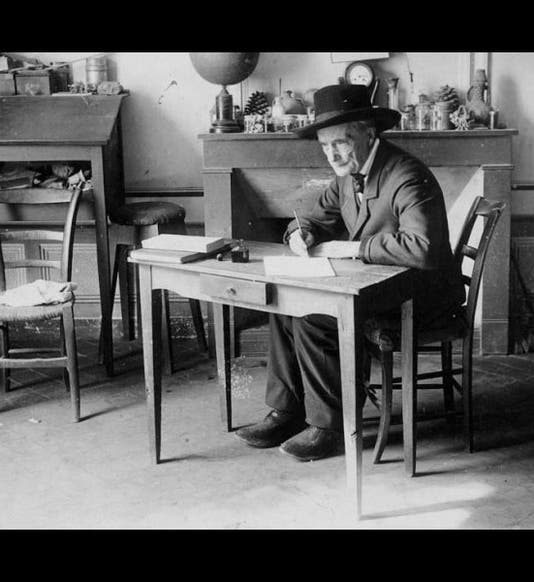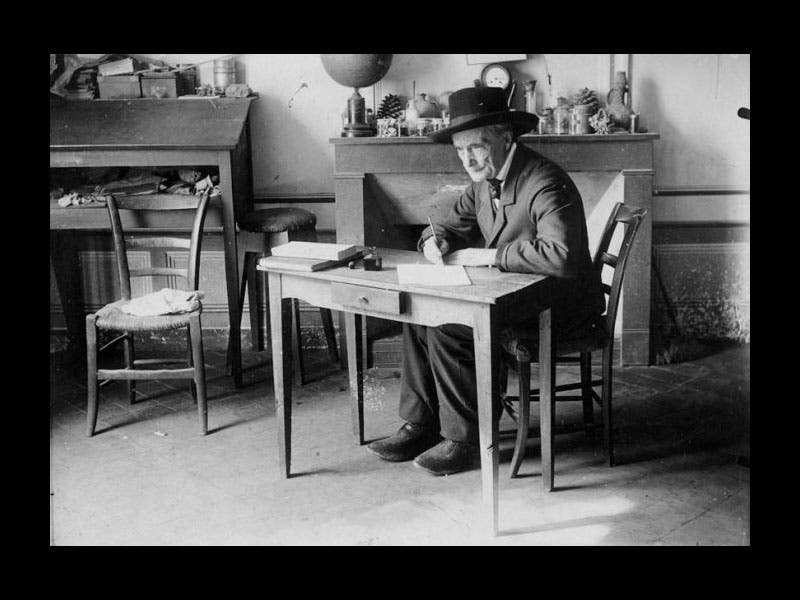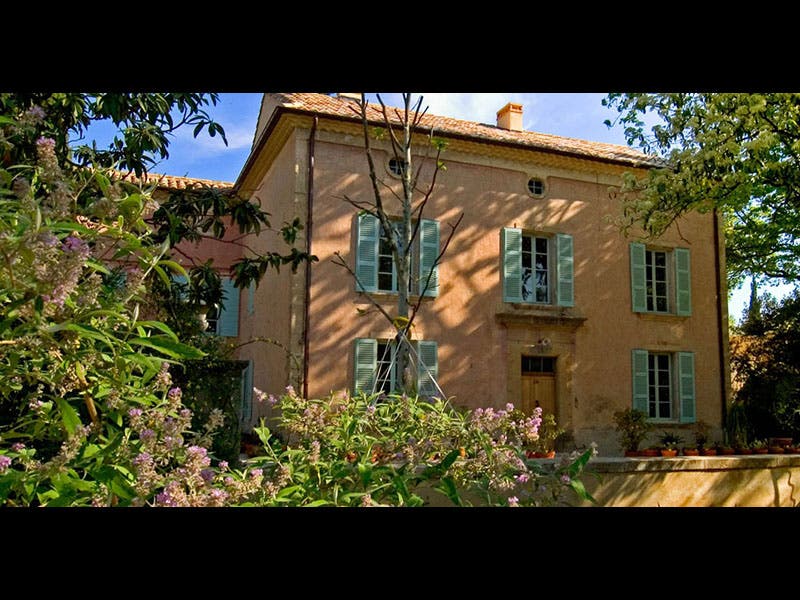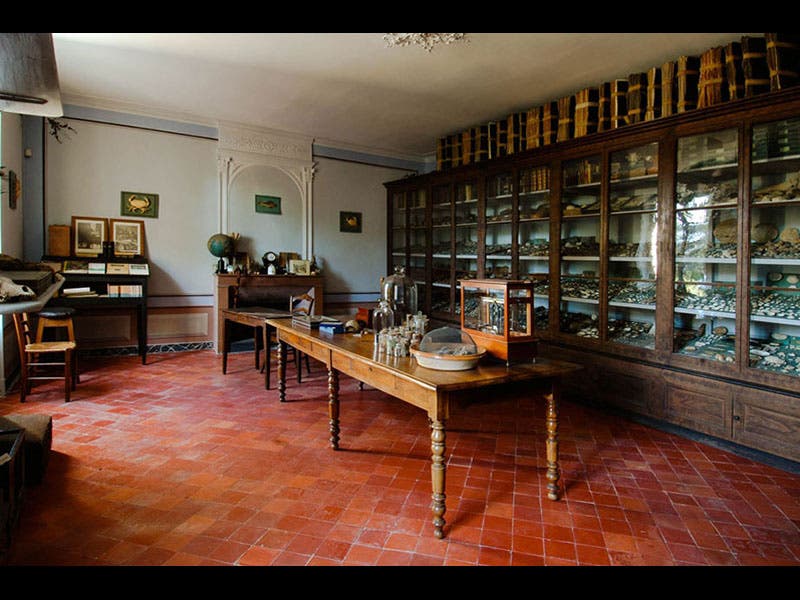Scientist of the Day - Jean-Henri Fabre
Jean-Henri Fabre, a French writer and entomologist, was born Dec. 22, 1823. In 1879, Fabre began publishing a series of popular books on the lives and behavior of insects. They appeared over the next 30 years in ten volumes and are known collectively as the Souvenirs entomologiques. This was a brand new kind of zoological prose, almost biographical in style, except the subjects were wasps, weevils, and caterpillars, which Fabre observed daily with evident pleasure and delight. No doubt the most famous passage in all his works appears in his Life of the Caterpillar, a translation of the 6th volume of the Souvenirs. Fabre had collected in his greenhouse some Pine Processionary caterpillars, which have the curious habit of travelling in follow-the-leader fashion, with the lead caterpillar laying down a trail of silk and each succeeding one, following snout-to-butt, adding to the silken trail. One day a colony climbed up onto the rim of a large flower pot and, seeing a golden opportunity, Fabre waited until a complete circle had formed and then shooed away the rest, leaving a continuous (and leaderless) slowly moving procession. He was curious how long they would follow one another before they would get hungry and break up, in quest of the pine needles that were not far away. To his amazement, even though the procession fragmented each night due to the cold, each morning it would reform, and the stately march continued for 7 days, as the silk trail became a rope, during which each caterpillar walked some 450 meters, at the stately pace of some 3 1/2" per minute, by Fabre’s account. Only Fabre could make such a millipedal march seem exciting and drama-filled.
The publication of the first Souvenirs coincided with Fabre's move to a country garden and estate in Provence, known as Harmas. Fabre lived there until his death in 1915, at the age of 91. Today, the Musée Harmas Jean-Henri Fabre continues to preserve Fabre’s legacy, where one may see not only his house and his considerable collections, but the beautiful grounds as well (second and third images). We have in the Library a sizeable collection of English translations of Fabre's Souvenirs, with titles like The Hunting-Wasps and The Life of the Weevil, but we do not have any of Fabre's original French publications.
Dr. William B. Ashworth, Jr., Consultant for the History of Science, Linda Hall Library and Associate Professor, Department of History, University of Missouri-Kansas City. Comments or corrections are welcome; please direct to ashworthw@umkc.edu.










